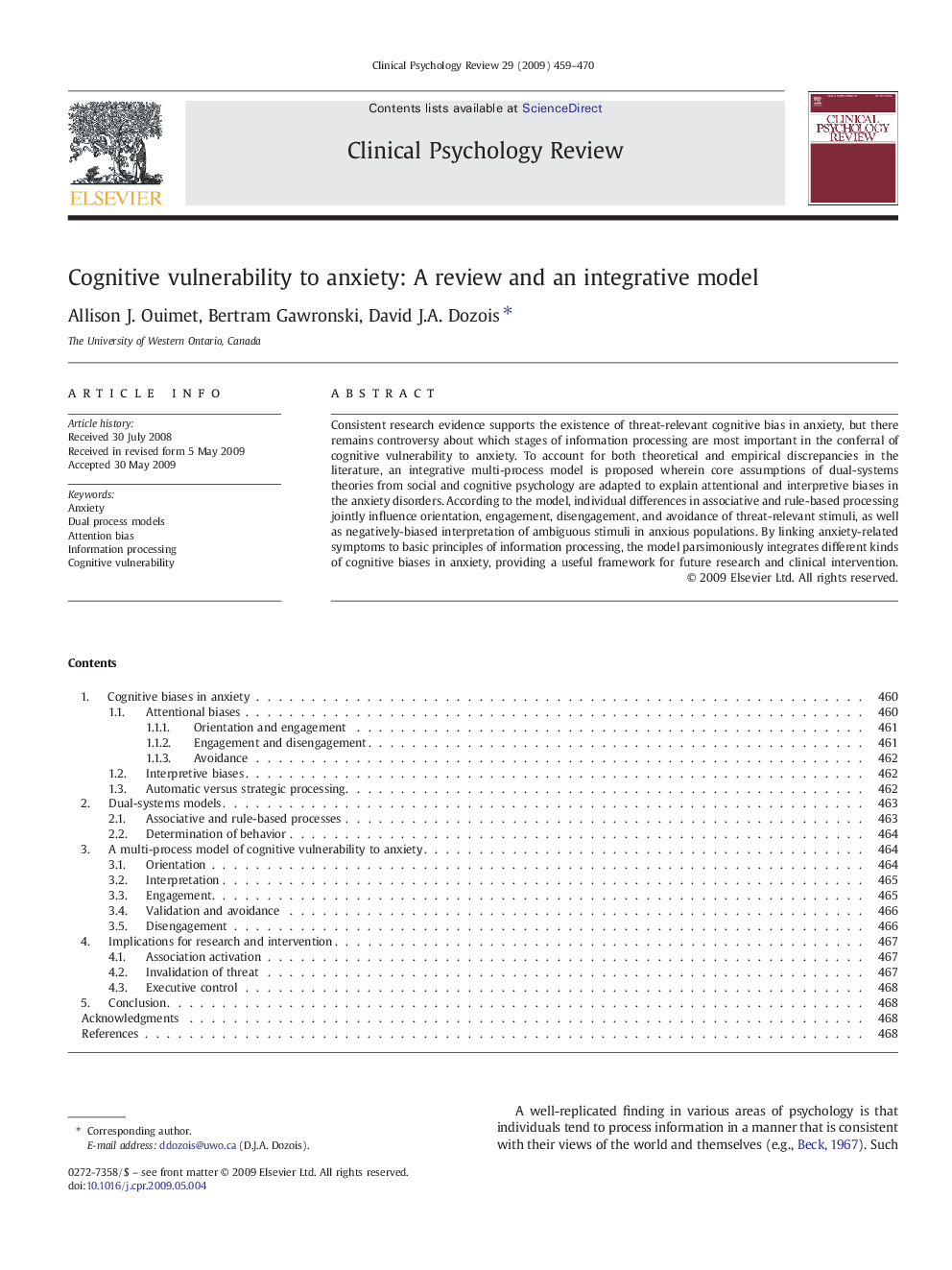| Article ID | Journal | Published Year | Pages | File Type |
|---|---|---|---|---|
| 903944 | Clinical Psychology Review | 2009 | 12 Pages |
Consistent research evidence supports the existence of threat-relevant cognitive bias in anxiety, but there remains controversy about which stages of information processing are most important in the conferral of cognitive vulnerability to anxiety. To account for both theoretical and empirical discrepancies in the literature, an integrative multi-process model is proposed wherein core assumptions of dual-systems theories from social and cognitive psychology are adapted to explain attentional and interpretive biases in the anxiety disorders. According to the model, individual differences in associative and rule-based processing jointly influence orientation, engagement, disengagement, and avoidance of threat-relevant stimuli, as well as negatively-biased interpretation of ambiguous stimuli in anxious populations. By linking anxiety-related symptoms to basic principles of information processing, the model parsimoniously integrates different kinds of cognitive biases in anxiety, providing a useful framework for future research and clinical intervention.
